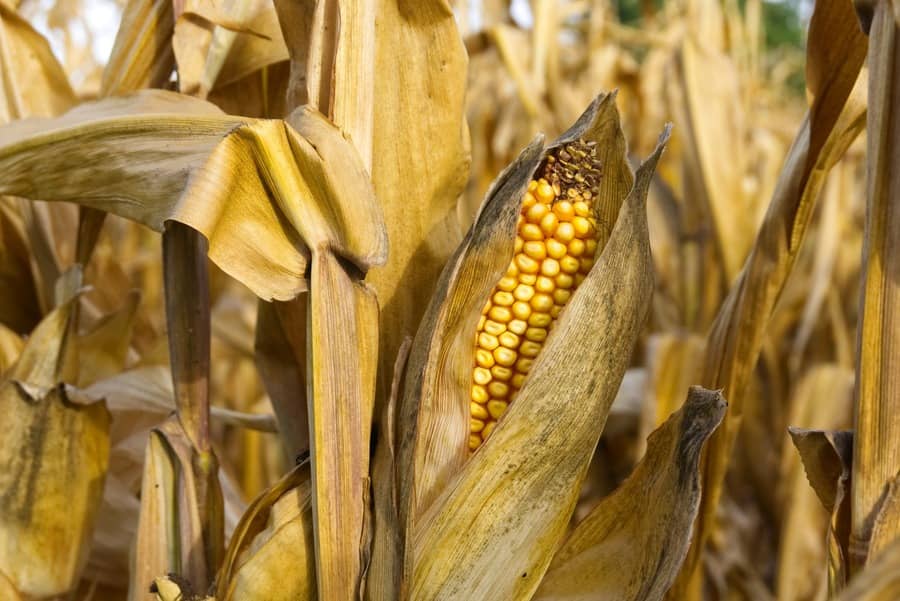Porto Alegre, May 3, 2022 – Last week was turbulent in the Brazilian domestic market due to the position of low regional stocks, doubts about the current climate effect on the second crop, and high prices at ports. Many deals occurred with the 2022 second crop from Mato Grosso and Goiás at prices that pleased growers a little more. As always, the issue of the climate over the second crop still deserves all attention due to the risk of frost in the South and the need for two or three occurrences of rain in good volume in the Midwest.
Of course, for those estimates that indicated a super crop in Mato Grosso and disregarded the seasonality of the local climate, production cuts must appear. Safras & Mercado already limits the initial estimates due to the seasonal climate picture of each region. Therefore, although we pay attention to the state’s climate, the effect of the current climate is already calculated. The risk is really the second crop of Goiás and Minas Gerais, where there is a real problem.
A good week for corn trading in Brazil. With the exchange rate approaching BRL 5.00 and prices on the CBOT remaining above USD 8.00/bushel, port prices jumped to BRL 95 to 100/bag. This was the week’s business range for exports, with shipments from May to October. The highlight of this sales flow is in Mato Grosso and southwestern Goiás, two regions that sold the second crop aggressively at levels near BRL 75 and 80/85 respectively. Paraná and Mato Grosso do Sul started doing business via railway in northern Paraná at BRL 92/93.50 for July/August. São Paulo also started selling physical corn to the port, with shipments in May and June at BRL 90 FOB. In Maranhão and Piauí, business began to be carried out at BRL 80/81 with the second crop.
Therefore, Brazil’s 2022 second crop found a balance between the prices at ports and selling interest in the interior that favored the advancement of business. In this way, the market is adjusted to exports. Lower prices at ports will put pressure on the domestic market, and higher prices at ports will give room for domestic price support.
However, the fact that the highest volume of business took place in Mato Grosso reveals that the second crop is guaranteed from the viewpoint of growers, otherwise there would be restrictions on sales due to the risk of non-compliance with contracts. The advance of sales in the state and southwest of Goiás indicate that the risk for the second crop in these locations is much lower.
At this point, we need to assess that the planting of this second crop was carried out in a more balanced way and within a great window. Many crops have already passed the critical phase and are in pod filling. Of course, rain is also needed at this stage. But it has rained in Mato Grosso, west and center-north of the state. The most critical situation is in the south and part of the east, with little rain in the last 30 days. April was a month of good events across the state. May will need at least two occurrences to improve later crops, still in the silking stage, as well as the result of crops already in pod filling.
The cut in Mato Grosso’s second crop must occur amid those information sources that disregarded in their estimates the state’s climatic seasonality, which usually has less rain after April. Nothing new, but projections above 40 million tons put yields far above the year’s potential. Now these estimates will be cut. Safras & Mercado already considers the seasonal climate scenario and initially starts from more conservative projections, with a current estimate of 37 million tons, which is adjusted to the current real scenario.
The most problematic situation, as we have already mentioned, is in the eastern axis of Goiás and Minas Gerais. In this region, the situation is more critical, a good part of crops may not reach the pollination stage if it does not rain for the next ten days. We are confirming a picture of losses due to the May trend for very dry weather in these locations. This region’s production potential is equivalent to roughly 7 million tons, and the loss assessments involve this region. The southwest of Goiás may also be partially affected by less rain, but crops are already in more advanced conditions.
Overall, therefore, some productivity potential adjustments are upward in some states and downward in others. Matopiba’s second crop must be a record and possibly help the national number to balance. Thus, the Brazilian market heads for exports, is adjusted to port levels, and price formation will be in line with the competition between domestic demand and export flow. There is demand abroad for Brazilian corn, and this competitive flow may lead to a high number of shipments in the second half of the year.
Agência SAFRAS Latam
Copyright 2022 – Grupo CMA

